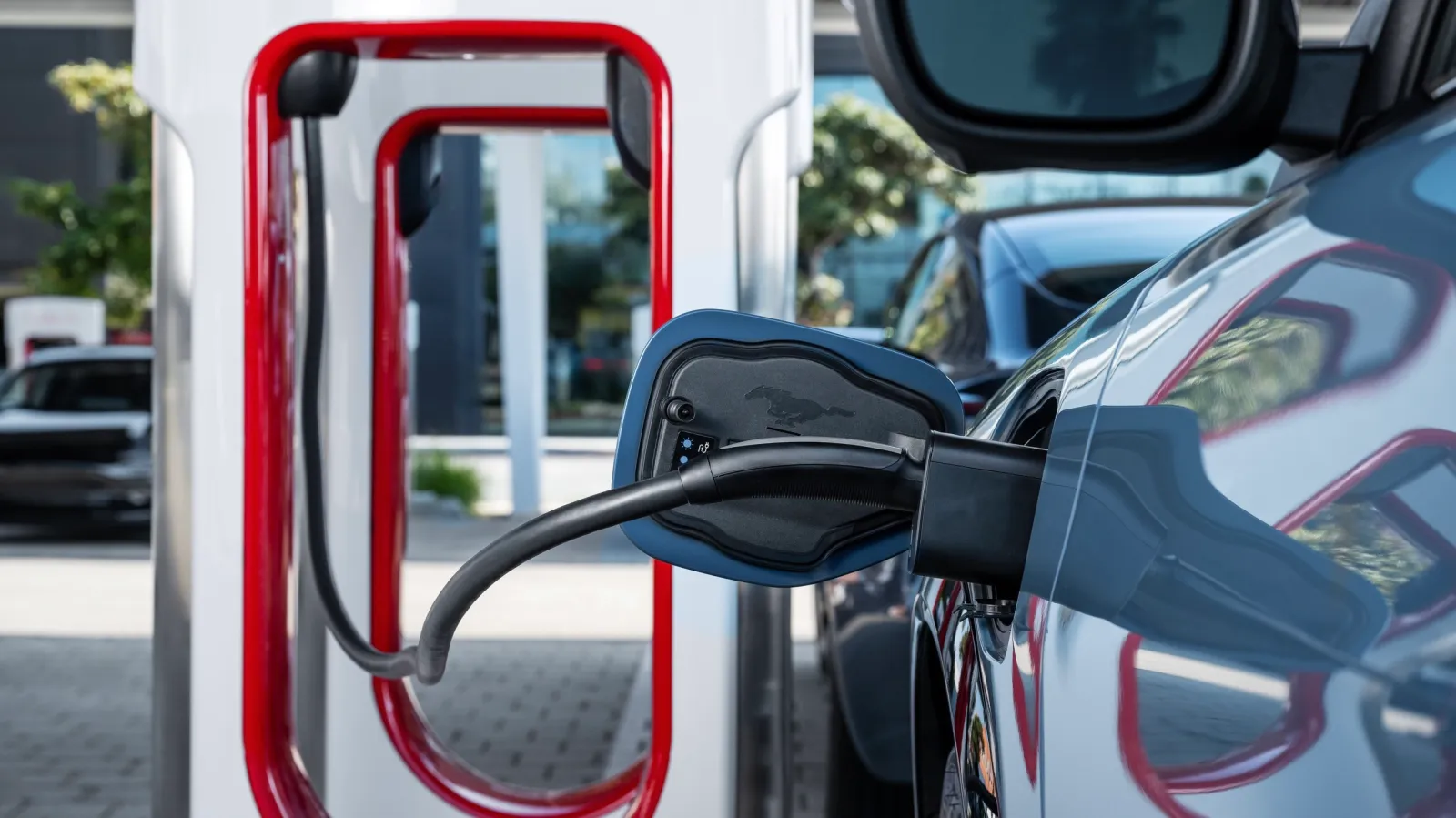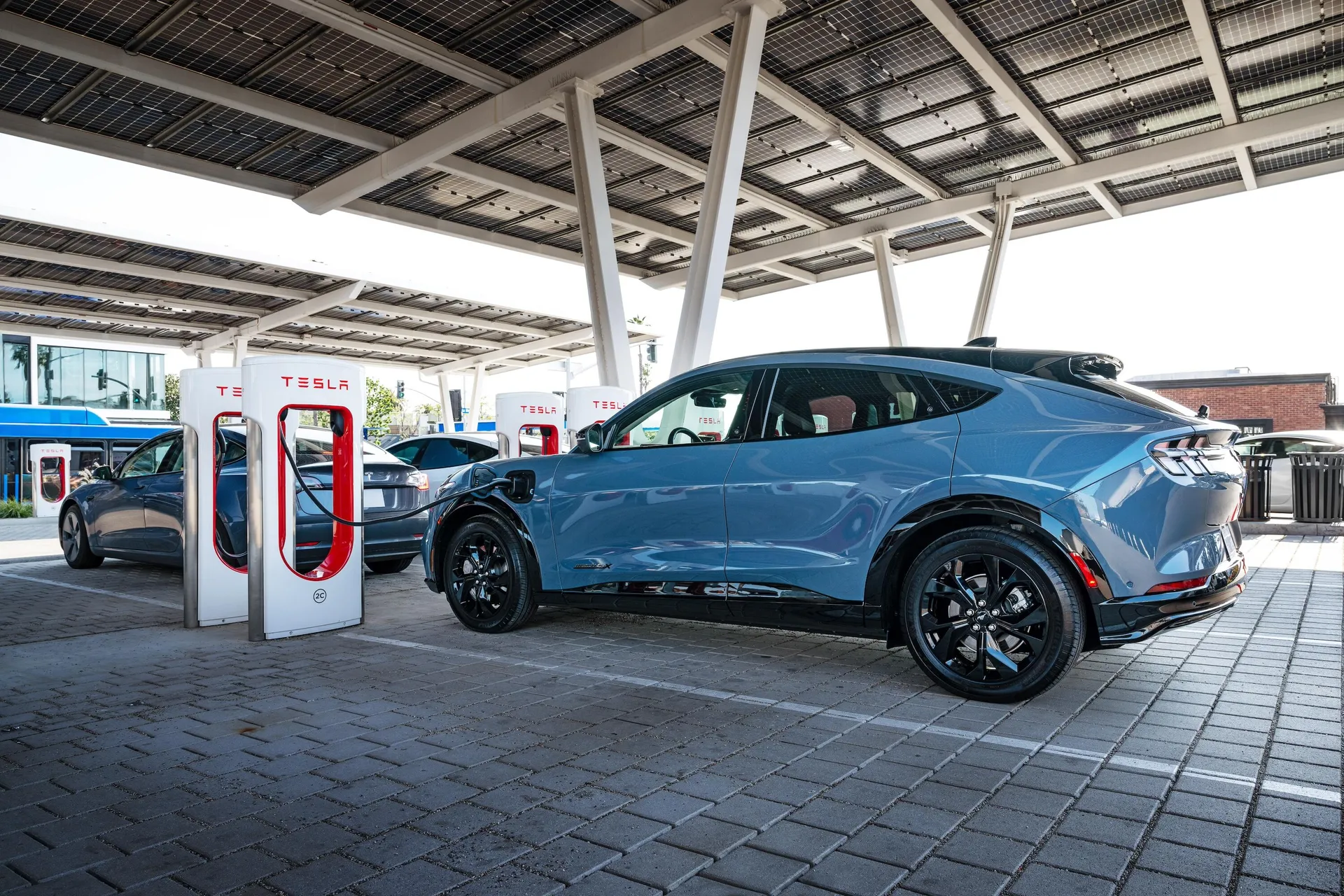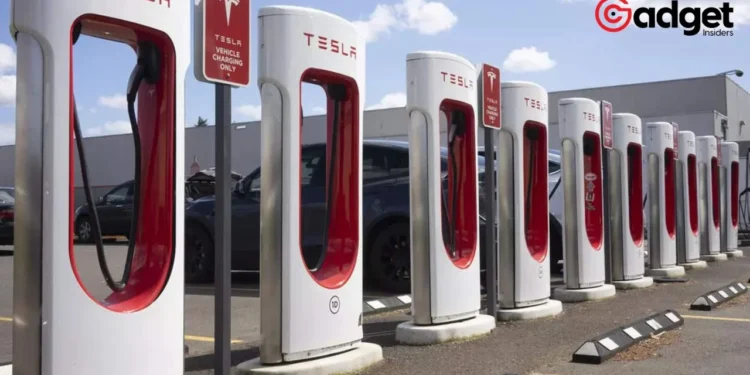In a landmark move that redefines the electric vehicle (EV) landscape in North America, Ford has officially announced that its electric vehicles, including the popular Mustang Mach-E and the robust F-150 Lightning, will now have access to Tesla’s extensive Supercharger network. This strategic partnership not only marks a significant milestone for Ford but also for the EV industry, as it heralds a new era of cross-company collaboration aimed at enhancing the EV charging infrastructure across the United States and Canada.

A Seamless Integration for Ford EV Owners
With over 15,000 Tesla Superchargers now available for Ford electric vehicles, owners can rejoice in the newfound convenience and efficiency. This integration is facilitated by the adoption of the North American Charging Standard (NACS), previously known as the J3400, an initiative spearheaded by Elon Musk to unify the EV charging network.
Ford’s commitment to this standard underscores its dedication to sustainable transportation and its willingness to collaborate with industry leaders like Tesla to achieve it.
The NACS Advantage: Bridging the Gap
In the field of electric vehicles, the NACS, which is now commonly known as the J3400 connector, has made a significant contribution to the industry. Providing electric vehicle owners with a uniform charging option makes the process of charging their vehicles substantially simpler.
The adoption of this standard by Ford, in conjunction with the offer of a complimentary NACS or J3400 Fast Charging Adapter for its electric vehicle models scheduled for production between 2021 and 2024, exemplifies the proactive approach that the firm takes to improve the customer experience and encourage the adoption of electric vehicles.
"I would also like to thank @ElonMusk and the Tesla team for their close collaboration and leadership to help change the lives of so many EV customers through improved access to charging."
— Jim Farley, on launching Tesla Supercharger access for Ford EVs, today. pic.twitter.com/uz7cD4tCsX
— Jaan of the EV Universe ⚡ (@TheEVuniverse) February 29, 2024
Free Charging Adapters: A Limited-Time Offer
In a move that further sweetens the deal for Ford EV owners, the company has announced the availability of free NACS or J3400 Fast Charging Adapters. This offer, valid until June 30, allows owners of 2021 to 2024 Ford EV models to seamlessly integrate their vehicles with Tesla’s Supercharger network.
After the promotional period, the adapters will be available for purchase at $230, emphasizing the importance of acting swiftly to take advantage of this generous offer.
The Broader Impact: Shifting Industry Standards
Ford’s integration into the Tesla Supercharger network is not just a win for the company and its customers; it represents a significant shift in the automotive industry’s approach to EV charging. Following Ford’s lead, other major players like GM and Volvo have also embraced the Tesla NACS, indicating a growing consensus on the importance of a unified charging standard.
This collective movement towards NACS adoption, including by Japanese automakers Honda and Toyota, is a testament to the industry’s commitment to making EV charging more accessible and convenient for drivers across North America.

The Road Ahead: A Unified Charging Future
As the automotive industry continues to evolve, the collaboration between Ford and Tesla in opening up the Supercharger network to non-Tesla EVs is a promising sign of future partnerships that prioritize consumer convenience and environmental sustainability.
This initiative not only enhances the value proposition of owning an EV but also sets a precedent for how automakers can work together to accelerate the transition to electric mobility. Ford’s access to Tesla’s Supercharger network, facilitated by the adoption of the NACS/J3400 standard, is a significant milestone in the EV industry.
It exemplifies how collaboration and innovation can lead to tangible benefits for consumers and pave the way for a more sustainable, electric-powered future. As we look forward to the advancements and partnerships that will continue to shape the EV landscape, it’s clear that the road ahead is electric.










